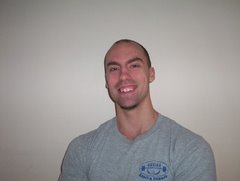People need corrective training, that's no secret. For most, all they need is a healthy dose of foam rolling and dynamic flexibility and they're all set. Those two things alone will work wonders as far as fixing many of the postural issues that most people encounter.
That being said, I still don't understand why personal trainers will spend a great portion of a training hour with clients doing nothing but cute, little corrective training exercises or balance training. Getting your clients STRONGER will undoubtedely be corrective in nature. [This is NOT to say that there aren't special circumstances where corrective training is of paramount importance].
The Law of Repetitive Motion, as popularized by Eric Cressey and Mike Robertson explains why getting your clients stronger WILL be corrective.
I=NF/AR
I=Injury
N=# of repetitions that exacerbate the problem
F= Force of each repetition
A=Amplitude (range of motion)
R=Rest
Getting your client stronger will minimize "F" (repetitive stress will seem less challenging to the body.
Someone's knee hurts? Strengthen their posterior chain and get their glutes to start firing. BAM: no more knee pain.
Additionally, people NEED a training stimulus. Call me crazy, but I am willing to bet that if your client lost 20 lbs of fat, he/she would probably feel better and have better structural balance overall. Spending 45 minutes doing nothing but balancing on an Airex pad or performing a circuit of rotator cuff exercises won't help in that regard.
Don't get me wrong, I am all for corrective training modalities. But like I said above, a healthy dose of foam rolling and dynamic mobility at the start of a training session will shake loose most imbalances. This takes all of 10 minutes to complete. Not to mention you can save a lot of "wasted" time by doing corrective training in between sets. I like to throw in extra sets of scapular push-ups or terminal knee extensions or banded external rotations while my clients rest. That way, while we're discussing last night's episode of Lost, they are still doing something productive.
Examples:
A1. Front Squat
A2. Seated Row
***Filler: Scapular Push-ups while resting
A1. Bench Press
A2. Walking Lunges
***Filler: Behind the Neck Pull-Aparts
Friday, May 11, 2007
Subscribe to:
Post Comments (Atom)

1 comment:
Great post, Tony. One thing I always wondered about doing some extra corrective work between sets though...wouldn't this detract from ATP recovery? Even though the kind of corrective exercises you are doing are not maximal effort, surely they still place some tax on the body and lower the recovery of ATP between sets? Wouldn't this have an effect on fatigue and rest period effectiveness in the long run?
Post a Comment